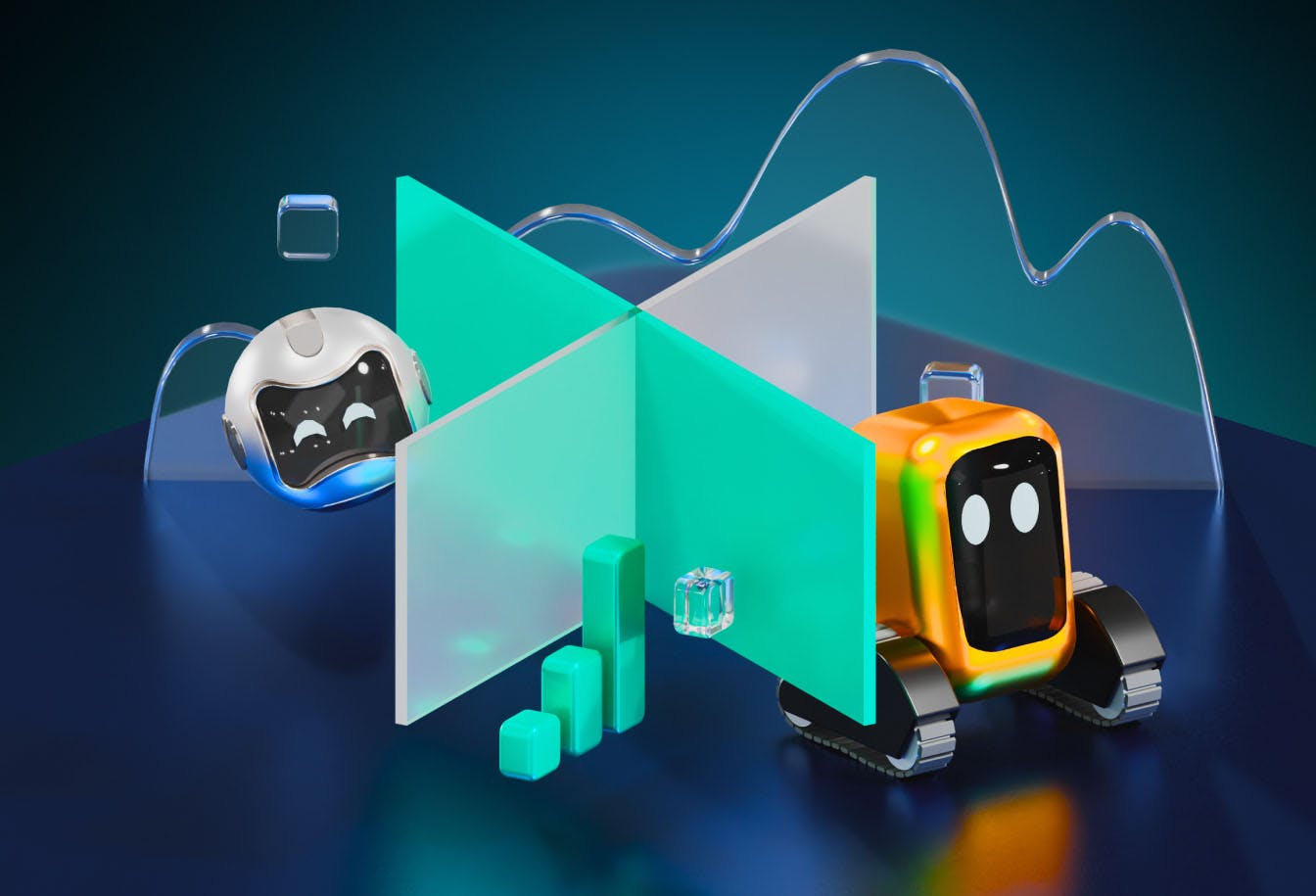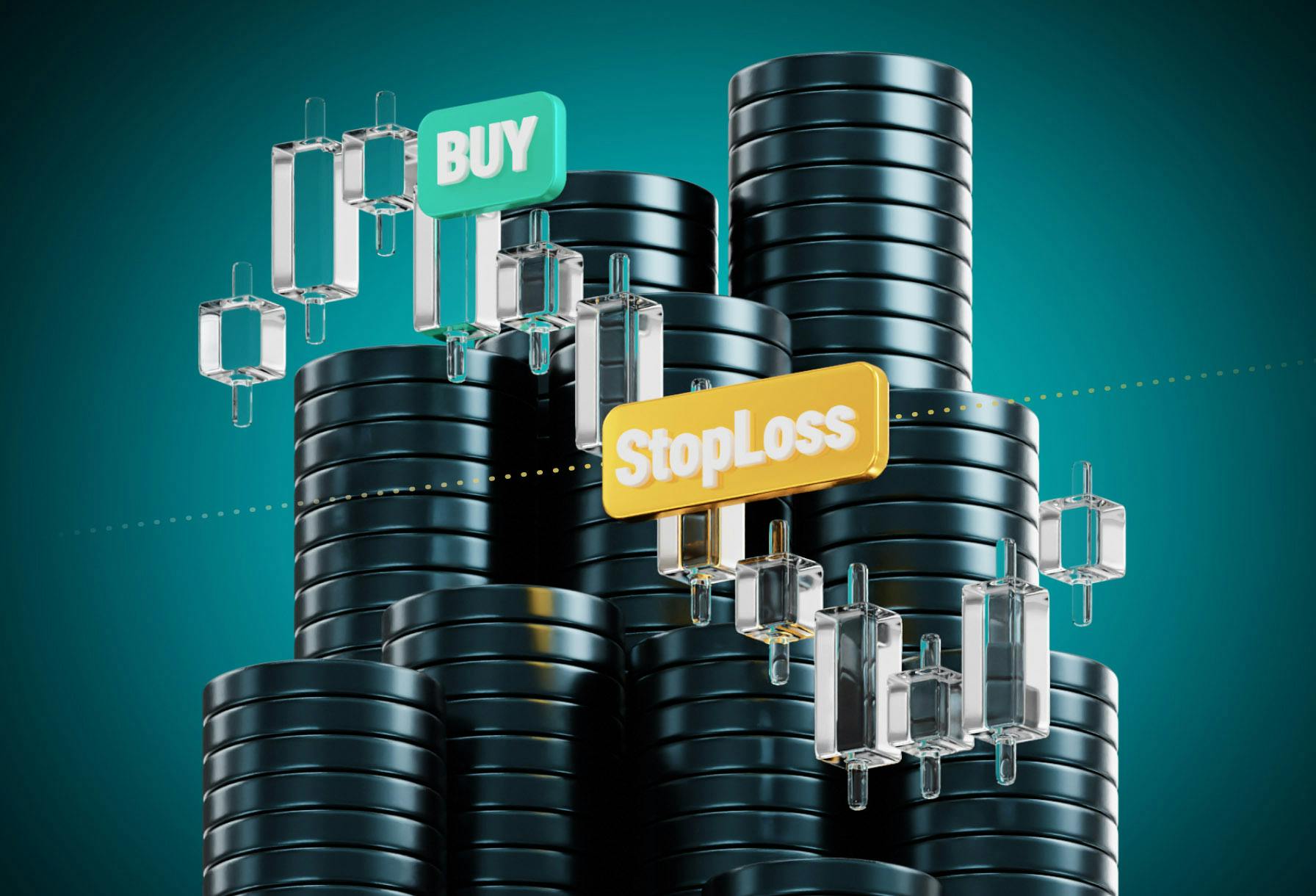
- All
- Tools
- Analytics
- Technical Analysis
- Trading
- Blockchain
- DeFi
- Guides
- Company News
- Educational
- Opinion
- Price Predictions
- Market News
- News
- Trading cases
- Practical guides
- Exchanges
- Trading signals
- Cryptocurrency
- Crypto bots
- Other
Become a crypto master
Learn everything about crypto,
trading and bots

How to Build Your Algorithmic Trading Bot in 2025
Ever wondered what it is like to build your own bot? Perhaps you don’t like the bots habitating the market. Either way, this article is for you, as it breaks down how you can build your very own algorithmic trading bot.
- Building Your 2025 Bot: Intro
- What is a Trading Robot?
- Why Build Your Own Trading Bot?
- Building a Bot: Algorithmic Trading Strategies
- Back Testing And Optimization Of Algo Trading Strategies
- Why Backtest An ALGO Trading Strategy?
- Coding And Development of Algorithmic Trading Bots
- Advantages of Having Your Own Bot
- Disadvantages of having your own bot
- Closing thoughts
- Conclusion
- Building Smarter Algorithmic Trading Bots in 2025: What's Changed?
Start Trading on 3Commas Today
Get full access to all 3Commas trading tools with free trial period

Building your bot revolves heavily around the concept of strategies and working with the data, hence, the first half of the article addresses the matters closely related everything strategy. The second half is more technical and refers to coding skills and pros/cons of having your own bot.
Building Your 2025 Bot: Intro
Financial market trading offers multiple opportunities to make money, but it can be challenging if you don't know your way around. However, credits to cryptocurrency algorithmic trading platforms, new traders looking to earn decent profits from the market have a chance, as these platforms manage all aspects of trading for you.
If you are unfamiliar with the automated trading bot concept, here's your chance to learn the basics and apply your experience to design your algorithmic trading bot! On the other hand, if you have a basic idea of how the market works and what you would do in different market conditions, you are ready to build your bot.
What is a Trading Robot?
A trading robot is a simple word for algorithmic trading that relies on a set of several trading indicators to determine whether to buy or sell an asset at a given time. You should also note that you can set your own parameters and optimize your trading strategy for optimal results.
Essentially, trading bots carefully monitor the market and execute trades based on the already defined settings. It does this with optimum speed and accuracy. Trading bots can respond a hundred times quicker than humans — hence their efficient functionalities are out of the question.
Trading bots involve many strategies: you can find arbitrage bots, scalping bots, trend-following bots, mean reversion, and many more.
Why Build Your Own Trading Bot?
Most financial market participants, including crypto, stocks, and forex traders use automated systems, as they provide many benefits. Simply put, you can save time, while a system is trading on your behalf.
In other words, you can set it up just once and mind your own business, sometimes checking the bot just in case. Bots also are 100% less emotional than traders, which implies no emotional trading whatsoever. As a result, no greed, fear, or respective losses. When it comes to how much can a trading bot make, the potential earnings depend on various factors such as market conditions, trading strategy, and risk management employed by the bot.
Last but not least, bots trade 24/7, unlike humans. Time in the market > timing the market, the golden rule in works.
Summing up, your own bot might save you time, increase profits, and unlock a 100% customization just a few automated software providers allow.
Building a Bot: Algorithmic Trading Strategies
Strategies are sets of codes that automatically execute orders without human interaction. Instead, algorithmic trading strategies entail making trading decisions based on pre-made rules.
These rules are usually based on timing, pricing, quantity, and other profit-making trading tools. Algorithmic trading increases the potential of making profits by eliminating the impact of human emotions on trading. Incorporating machine learning for algorithmic trading bots with Python can further enhance trading strategies by leveraging advanced data analysis and pattern recognition capabilities.
Arbitrage
This strategy involves buying a dual-listed asset at a lower price in one exchange and selling it at a higher price. Arbitrage provides almost risk-free profits. Besides doing this on two exchanges, arbitrage bots can also take advantage of a price available on two markets, for example, on the Spot and Futures market.
It explores the best of the market and uses algorithms to discover such price differentials and place orders instantly. Deploying an automated trading bot for crypto arbitrage reduces the time it takes to complete each trade, and it can perform hundreds of transactions. As a result, the bot makes numerous yet small and consistent profits which later turn into long-term profits.
Mean Reversion Strategy
The concept of mean reversion trading revolves around market fluctuations. The market moves around to find a balance point eventually. In other words, the market always returns to the mean average, it’s just a matter of time in most cases [some exceptions are so minor that they’re neglected]
Mean reversion algorithmic bots enter trades when prices deviate from the mean average. Once the price bounces back, the bot closes the trade for profits. A mean reversion bot is essentially looking for Bollinger Bands and the Relative Strength Index (RSI) indicators to determine when a significant movement might occur. RSI, for example, clearly shows when an asset is overbought or oversold. When an asset is overbought or oversold, the idea is that it will return to the average.
Trend following
Trend-following algorithmic bots exploit the market to look for trades that deviate from the average for an extended period of time. As such, it's typically a long-term trading strategy. As opposed to a mean reversion strategy that involves an asset price oscillating between two points. Trend-following means the algorithm is stating that the trend will continue and not return to the mean. Most times, a trend-following strategy results in fewer winning trades, as it's pretty hard to know when a trend is happening.
Market Timing
Market timing strategies include live testing, backtesting, and forward testing. Backtesting is the first step in market timing, and it entails replicating hypothetical trades using data from a sample period.
Forward testing is the second stage of market timing, and it entails running the algorithms on sample data to check that they work as expected in the backtest.
The final stage is live testing, which requires a developer to compare real-time trades with the models that have been backtested and forward tested.
Back Testing And Optimization Of Algo Trading Strategies
Backtesting is a process of evaluating the performance of a trading strategy or analytical tool using past data. For instance, let's assume your trading strategy is to buy an asset when it drops 5% on a 24hr chart. Your backtest bot will run a background check on the asset’s price history and trigger a trade when it actually dropped.
It's an important part of creating a successful trading strategy. The process determines whether a particular trading strategy is good for you to use. Also, it helps in establishing market entry and exit points, as well as a position size, at the very least.
Another important part of backtesting is that you can optimize a particular strategy. The process allows you to improve the functionality of a strategy by altering relevant parameters such as quantity or values with that strategy and reevaluating its performance.
Backtesting offers a wide range of benefits for automated trading. However, you cannot always backtest every strategy. Typically, an increase in the frequency of a strategy reduces flexibility. In addition, it becomes difficult to accurately model the little effects of the market. As a result, backtesting becomes less reliable, leading to a complicated analysis of a chosen strategy.
All biases aside, backtesting and optimization are still an important part of algo trading strategy. While historical data does not automatically guarantee future success, a system that performs well in backtesting is significantly more likely to succeed in the future.
Why Backtest An ALGO Trading Strategy?
Backtesting helps you determine how a trading strategy will turn out under different market conditions, allowing you to run the strategy better.
Likewise, Backtesting allows you as a trader to choose from your different strategies and know the strength and weaknesses of each and how the market deploys them. You should know that some particular strategies work well with others while some combinations are somewhat lame. Running backtests gives you the necessary data to know the best for each market.
Overall, backtesting algorithmic trading strategy might give you the following insights:
- Understanding of how a specific strategy works in different markets.
- Tips on how you can improve and perfectly optimize a strategy
- Allows you to evaluate if your strategy makes profits when it's meant to and loses accordingly
Coding And Development of Algorithmic Trading Bots
After learning the basics of algorithmic trading strategies, if you're familiar with programming, there are multiple options available to you to code your own trading bot. The most popular one is Python. Other languages include C++, MQL, etc.
For extremely advanced bots, you'll need to learn machine learning as it can help your bot make decisions using its own Artificial Intelligence (AI).
In case you’re not a coder or nuclear scientist, you might want to check the link with 5 ready-to-go code samples. Sticking to the website’s left screen you can find other samples as well.
Necessary Requirements
For this piece, we will be using Python. So it requires you to know the basics of how the language works. Then, you need to get familiar with algorithm backtesting tools like [QuantConnect] or TradingView to test your strategy.
Now, let's look at a step-by-step procedure listed below to build your first algorithmic trading bot.
Create a New Algorithm
You can set up your coding environment by using tools like TradingView, HTML, CSS, Stack overflow, and quant connect.
For this example, we're using [QuantConnect]. On the site dashboard, select Create New Algorithm from the options on the left side of the page. You'll be taken to an editor with an automatically produced class.
Import the Required Libraries
There are several libraries to import from and to mention a few. It includes Pandas, [NumPy], Matplotlib, Seaborn, Sklearn, Keras, and NLTK. [NumPy] is the most suitable library we need.
Set up the Variables
Create funds for the backtest that will be utilized on a genuine account. Set the backtest's start and finish dates. To track the resolution of the intended data, use the [AddEquity] function.
Also, set the number of days we'll look back to figure out where we'll break. Set a lower and upper limit for the lookback. We'll use daily resolution in this instance. The stop-loss extent is the last thing to set up.
The first variable will affect how close stop-loss will be to the asset’s price. That is to say, it will tolerate a 2% loss before being exhausted.
The second variable determines how close the trading stop will track the asset’s price. This means it will trail the price by 10%, which is significant but allows for additional price flexibility.
Define a Plotting Method for The Data
To construct a plot of the price, we'll use the data method. The method provides a benchmark that we can use to assess the performance of our algorithm. This will also determine the closing price.
Develop a Trading Strategy
There are three stages:
- The first identifies the day on which the procedure is invoked.
- The second determines when the method is invoked.
- The final parameter defines which method is invoked, in this instance, [EveryMarketOpen].
We'll start by determining the length of the breakout's lookback period. First, we'll evaluate the current value to yesterday's value within a 60-day utility. This will assist in determining the lookback window's length.
Use the [History] function to receive data for the last 61 days or any other number of days. The standard deviation for the two days is calculated here using the [NumPy] module.
Plotting The Stop Price
Finally, print the new asset price to the console so that you can double-check the new order price if it changes. Unfortunately, we can't use the regular print function; therefore, we'll have to use the self instead.
The debug function is the quantitative equivalent of the print function. Plot our position's stop price on the data chart we made earlier. This enables us to see how our stop price compares to the current market price of the asset.
Performing a Backtest
Simulate a trading strategy using historical data to determine the algorithm's performance. Doing this allows you to evaluate results and calculate risk and profit-making potentials before investing any real money.
Advantages of Having Your Own Bot
One obvious advantage of having your bot is the cut down of expenses. Ordinarily, high-end trading bots might be quite expensive, and that is one of the major reasons individuals do not use them, as an average individual might not be able to afford them due to their high cost. However, when you develop and build your trading bot, there is an obvious cut down on cost.
Another affordable bot option is a ready-to-go set of bot by 3Commas. It costs $14.5 monthly for a Starter plan if you subscribe a year upfront. If you refer friends, you can get an additional 25% off the price.
Consistency
Many traders start with a trading plan, only to forget about it as time goes on. Plan the trade, then trade the plan, as the saying goes in the investment community. The latter is considerably easier if you automate your trades to follow your trading plan consistently to achieve lucrative results over a set period.
Backtesting
Backtesting is a term used in trading to describe when an investor looks back in time for signs on how to invest in the future. This technique allows you to examine historical market data to see if a trading strategy will work based on previous performances. Rather than guessing and perhaps losing money, you may automate that plan.
Disadvantages of having your own bot
Some trading systems include an optimization tool in addition to Backtesting. This feature allows you to provide a range of input and instructs the program to determine which input would have worked best for your plan. Unfortunately, although being an appealing exercise, optimizing a backtest in this manner frequently results in poor performance.
When this happens, your plan is said to be over-optimized, which means it's too complicated for the system to implement in practice. it merely looks good on paper. As a result, it's a good idea to start small, neat, and simple.
Monitoring
Like any other software, bots require monitoring and may not take external elements such as weather, economic conditions, or other considerations into account. Moreover, bots can't analyze the market like humans. You should check on bots to track performance and profits in case of market contraction, a black swan event, or anything else. Leaving your bot alone for a while could be expensive.
Wi-Fi and power supply issues can also affect your bot when you expect it least. A poor internet connection can result in a considerable loss if orders are not completed on time.
Closing thoughts
Developing your own bot might seem like a good idea at first, but a bit of research unveils some hard truth — you need hard-end technical skills to build one. On top of coding skills, you need trading experience or at least a tight market understanding. Moreover, some mathematical, statistics, machine learning, and AI background wouldn’t hurt either.
As a matter of fact, most users might not build their bot. The positive point is that they don’t really need it, as the market is full of ready-to-go solutions. Even though they are not 100% custom, flexible, cheap, [call it perfect], they are still viable options to automate your daily trading and add profits on top.
Conclusion
Building your own algorithmic trading bot in 2025 is an enticing venture that offers both advantages and challenges. The key takeaways from this article can be summarized into several main points:
- Understanding Algorithmic Trading: Algorithmic trading, also known as trading bots, relies on predefined rules and strategies to execute trades. It eliminates emotional bias and can respond swiftly to market conditions.
- Advantages of Building Your Own Bot:
undefinedundefinedundefined - Algorithmic Trading Strategies: Different strategies like arbitrage, mean reversion, trend-following, and market timing can be employed, each with its own set of rules and indicators.
- Coding and Development: Building a trading bot requires programming skills, with Python being a popular choice. For advanced bots, machine learning and AI knowledge can be advantageous.
- Monitoring and Maintenance: Bots require regular monitoring to ensure they perform as expected. External factors, such as internet connectivity and unexpected market events, can impact bot performance.
- Considerations and Challenges:
undefinedundefined - Alternative Solutions: While building your bot is an option, there are ready-to-use trading solutions available in the market that can automate your trading activities without requiring extensive technical expertise.
In the fast-paced world of financial markets, algorithmic trading bots continue to evolve, offering traders an edge in executing strategies with precision and efficiency. Whether you decide to build your own bot or opt for existing solutions, it's essential to stay informed about market developments and adapt your approach to meet your trading goals in 2025.
Building Smarter Algorithmic Trading Bots in 2025: What's Changed?
If you're setting out to build an automated crypto trading bot in 2025, the landscape has matured in key areas—particularly in infrastructure, data handling, and AI model availability. What was once a highly manual setup has now become more streamlined thanks to improved tools and frameworks.
The first major shift is the accessibility of AI algorithmic trading bot templates that leverage open-source libraries like TensorFlow, PyTorch, and vector databases for embedding market context. These models aren't plug-and-play, but they do offer a foundation for constructing smarter decision logic based on statistical learning or sentiment inference.
Developers are also focusing more on reliability and latency control. With high-frequency strategies becoming more competitive, even hobbyist builders are optimizing their bots for stable uptime, robust API throttling, and redundancy across multiple exchanges.
When working with a software provider like 3Commas, traders can integrate their crypto trading bot directly into a broader automation stack. While 3Commas doesn't replace the need for custom development, it supports bot execution, backtesting, and portfolio routing—all critical components for teams building and refining strategies in production.
Finally, as automated cryptocurrency trading becomes more data-intensive, projects now commonly incorporate multiple data sources: real-time order books, funding rates, volume spikes, and even token unlock schedules. This multi-layered approach supports more adaptive logic, especially in volatile or illiquid markets.
In short, building a bot in 2025 means balancing sophistication with transparency. A successful system isn't just reactive—it’s modular, testable, and well-governed.
FAQ
An algorithmic trading bot is a simple word for algorithmic trading that relies on a set of market signals to determine whether to buy or sell a currency pair at any particular moment.
Bots can be profitable, especially reliable ones like the 3Commas DCA, Grid, or Option bots. The average high-end bot yields 10% to 25% annually.
The profits depend on many factors, but the market’s average is between 10% to 25% annually.
Depending on your skills and experience, trading systems might seem easy or hard. To call it easy, you need coding and trading skills at least. Some scientific degree related to mathematics or artificial intelligence wouldn’t hurt either. However, it’s never too late to start learning something new.
You can join an automated trading platform like 3Commas and start trading right away at no charge. Over time, you’ll learn more and might increase your exposure, becoming a true professional. 3Commas provides a slick learning curve for newbies.
Algo trading is safe as a concept but may entail trading risks depending on your trading strategy and its implementation. Compared to regular trading, automated systems imply fewer risks on average.
Imagine a robot that monitors BTC drop 5% in price and buys it automatically because you programmed it to do so — that’s a prime example of algorithmic trading.

A proven leader, successful at establishing operational excellence and building high-performance teams with a sharp focus on value creation and customer success.
READ MORE
- Building Your 2025 Bot: Intro
- What is a Trading Robot?
- Why Build Your Own Trading Bot?
- Building a Bot: Algorithmic Trading Strategies
- Back Testing And Optimization Of Algo Trading Strategies
- Why Backtest An ALGO Trading Strategy?
- Coding And Development of Algorithmic Trading Bots
- Advantages of Having Your Own Bot
- Disadvantages of having your own bot
- Closing thoughts
- Conclusion
- Building Smarter Algorithmic Trading Bots in 2025: What's Changed?




